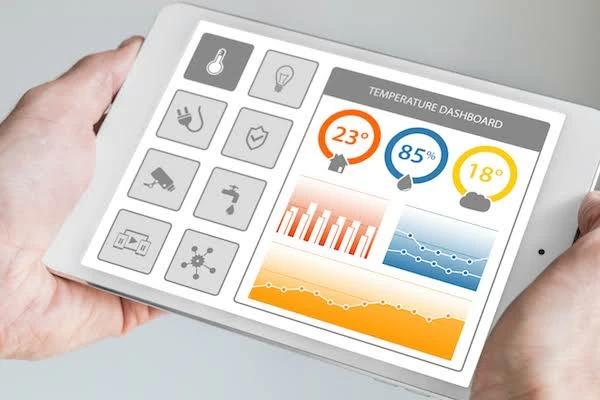Today’s world of embedded GUI development is a vast field with increasingly sophisticated characteristics making way into even more complicated user demands. With every new development in the niche, there comes into being a never-seen-before way to build embedded GUIs and integrate them with hardware and software which, of course, improves user experience (UX) to a great extent. But there is still quite a lot lacking when it comes to smartphone-like features being integrated into appliances like ovens and washing machines, or bigger systems like car infotainment and industrial equipment.
Not only do we see a massive change in the development of embedded GUIs but also in the patterns of expectations of the users. Firstly, in the initial years of the development of embedded software and GUIs, the public was all about asking for automation, ease of use, and visual interactions. So, naturally, ways were found to integrate these needs into GUI devices and make them more accessible to the common public. However, the demand has since changed.
Around the 2010s, the one major factor that users drove was the integration of multiple technologies to improve features, such as embedded Linux, multiprocessor design, and newer operating systems. And now, ten years later, with Linux being used in almost all embedded devices, the public wants the Internet of Things ( IoT ) and increasingly smart Artificial Intelligence ( AI ) to be made cheaply available. Needless to say, there have been manifold changes and developments in the embedded GUI industry in the past decade.
Table of Contents
Embedded GUI design equals code
Code has always reigned supreme when it comes to programming, which means developing and coding are given more focus than designing the user experience. Additionally, both developer and UX teams were historically considered as two separate entities when it came to device development, which meant limited communication, integration, and sync between the roles. This led to sophisticated code squeezed into not-so-well-designed GUI applications, limiting their true potential, and hence, adding to the public dissatisfaction where usage of embedded devices is concerned.
Today the design and development of GUIs are held on equal grounds compared to the past decade, especially by companies like Crank Software that are looking for ways to revolutionize the embedded GUI development universe. The company has seamless integration and communication between both development and UX design teams to know what the other is working with and integrating design assets with code without risk. On the other hand, a lack of designer expertise could create old-looking GUIs which are not well received by the audience.
Nature of design
Traditional embedded GUI applications were deployed on larger computers that consumed quite a lot of energy compared to today’s processors. Additionally, the resulting software and GUI interactions were limited to subject matter experts who could navigate the screen without a mouse and were aware of the behind-the-scenes workings of the underlying application.
In the present world, embedded devices are not limited to tech experts and are certainly not stationary and power-consuming like the old designs. You can benefit from the advancement of GUI development from the smallest of screens of your wearables and fitness bands, which are, of course, battery-powered and more like smartphones. Hence, the power source and nature of design have led to designing embedded GUIs that can be worked on battery-powered devices and by people who have limited knowledge of the tech world.
Usage inclusivity
As said earlier, embedded GUIs are used well beyond only a knowledgeable tech audience. Embedded devices have found their way into the hands of young kids and the elderly, who don’t care about tech topics like pixel shaders and graphic libraries but do demand a sophisticated look and feel. While embedded GUIs were not a widespread phenomenon twenty years ago, today, development skills, tools, and processes have evolved to facilitate their widespread usage.
In the present years, embedded GUIs are highly inclusive of all people with varied tech knowledge. Anyone can use even the most complicated devices, thanks to the interactive graphics and clear-cut designs. Now, GUIs are built with global usage in mind, understanding how people will receive the designs from different geographical, social, and cultural regions. Therefore, inclusive designs using simple embedded GUI development techniques that are easily navigable are a must for the common audience.
Programming language
Better programming languages and GUI frameworks have helped decrease the focus of embedded GUI development from code alone, helping boost the importance and integration of UX design. However, this was not always the way. Early on, unique and custom operating systems were the way to go for many developers, used by people looking for specialized embedded GUI features optimized for specialized platforms.
Soon open-source operating systems and commercialized, mass-market hardware took over, and today we live in the reign of great programming languages like C, C++, and Python that come with powerful libraries and platforms with built-in GPUs, hardware accelerators, and diverse peripherals. These elements help reduce the time and resources used during the development of the embedded GUI and streamline the efforts used in designing.
Embedded GUI development has come a long way since its initial rise in the 1980s. Today we are closer than ever to easily accessible AI, and the Internet of Things has already transformed the user experience. The industry is set to grow even more, and there are many more exciting changes just around the corner!

